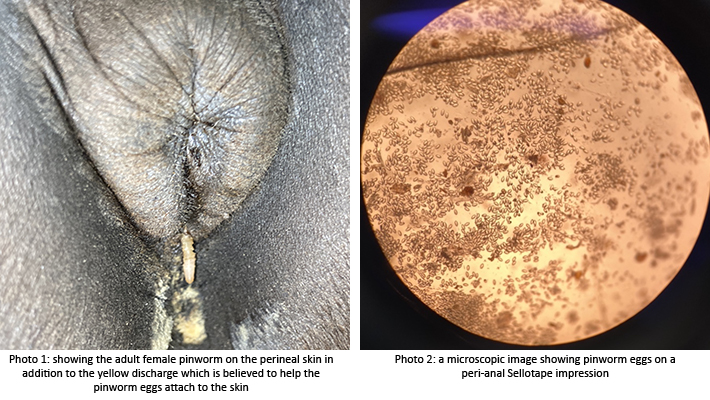Pinworm (Oxyuris equi) infection is manifest by affected horses itching their peri-anal and tailhead regions. Adult worms reside in the large intestine with the female worm travelling down the small colon to lay eggs on the skin surrounding the anus (often indicated by a yellow discharge as seen in photo one below). This usually causes intense irritation manifest by rubbing. Occasionally, mature worms are visible protruding from the anal sphincter which we can also see in this photo.
Diagnosis is confirmed through microscopic examination of a sellotape impression taken from the peri-anal skin or yellow discharge (if present) which will reveal the pinworm eggs (seen in photo two below).
Most commonly used wormers are effective for pinworm (ivermectin, avermectin or pyrantel based wormers) and should be administered to clinical cases. The peri-anal region and underside of the dock should also be washed using dilute hibiscrub to remove the eggs. We generally recommend cleaning for three to five consecutive days. The stable should also be thoroughly cleaned and disinfected to endeavour to remove environmental eggs.
Pinworm infection should always be considered in cases of tailhead itching but it is also important to consider other potential causes including sweet itch, other allergies, mites and lice. It is also important to remember that pinworm infection is generally not indicated on faecal worm egg counts as the eggs are deposited on the skin surrounding the anus. Therefore, horses with negative faecal worm egg counts may still succumb to pinworm infection.
As always, should you have any questions, please do not hesitate to contact the equine team.

